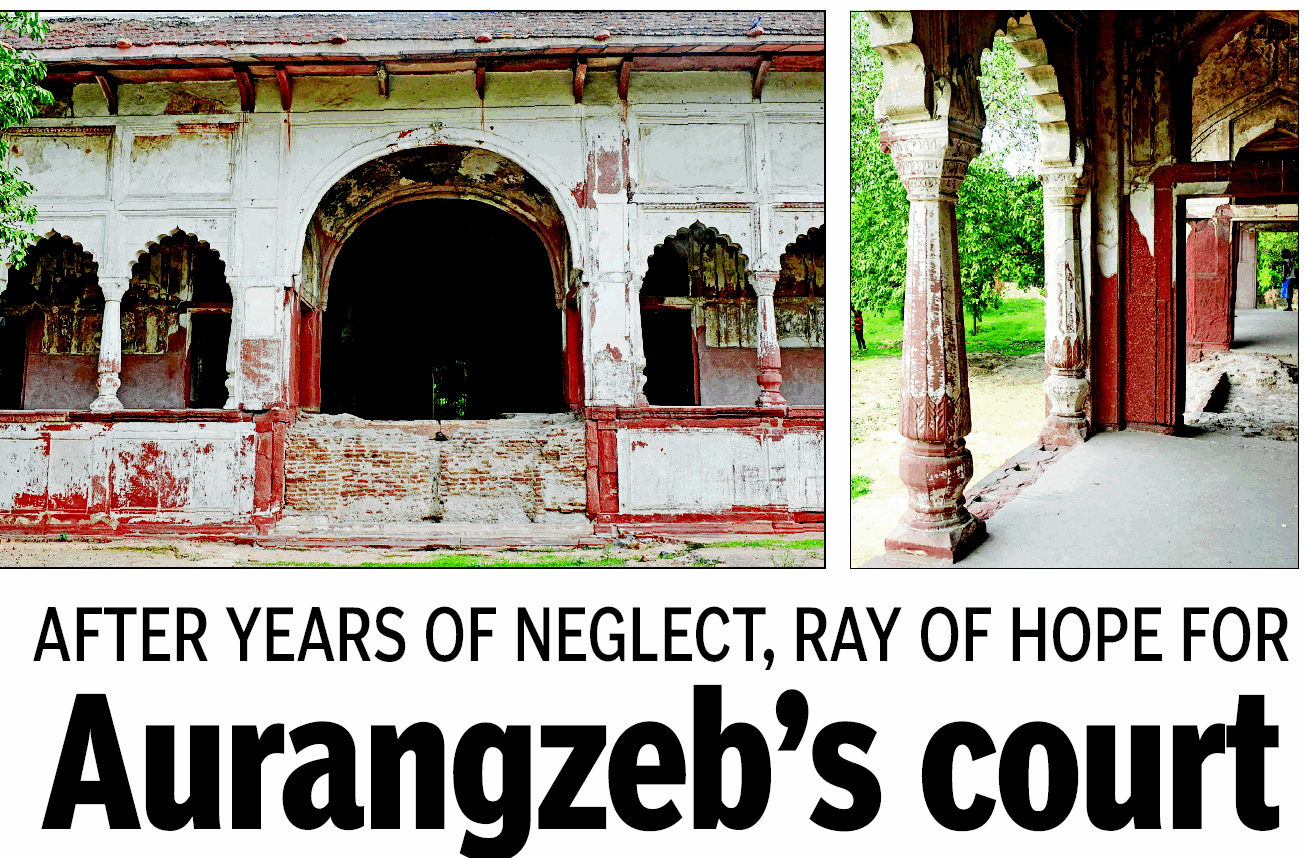Delhi: T
This is a collection of newspaper articles selected for the excellence of their content. |
Contents |
Azimganj Serai
The Delhi cabinet in 2013 approved a plan for the conservation and upkeep of Mughal-era Azimganj Serai monument located on the premises of Delhi Zoo. . The serai clearly stood on the historic Grand Trunk Road
Lal Mahal
The 13th-century Lal Mahal (Red/ Ruby Palace) in the Nizamuddin area, is one of the oldest Islamic palaces of India, is located in the ‘prohibited zone’ of four centrally protected monuments— Nizamuddin Baoli, Barakhamba, Chausath Khamba and Mirza Ghalib’s tomb. It is not an ASI-protected site. In 2013 construction activities took place around it.
Mehram Nagar
A Mughal courtier’s lost garden
Historic ruins at Mehram Nagar are disappearing and may not stand the test of time for long
Richi Verma | TNN
The Times of India 2013/07/22
The minute you drive out of Indira Gandhi International Airport, you pass Mehram Nagar. Only the cognoscenti know it’s home to ruins of a lost era.
A gateway, a mosque, an enclosing wall, a katra and an authentic Mughal garden—all in various stages of dilapidation and decay—stand testimony to the historicity of the settlement set up in mid-17th century and named after Mughal courtier Mehram Khan.
Only one of the three gateways to the 17th-century Mughal sarai stands today. One other vanished decades ago and remnants of the third can be seen between a cluster of shops and houses. The surviving gateway is an imposing double-storey structure with pointed arch openings enclosed by a cusped arch façade. The side bays have been encroached by shopowners but the fact that the wooden gates are buried at least two feet deep stands testimony to their age. A few feet away, construction work for a Metro station is on full swing.
Some distance away lie remains of the sarai wall. Portions of it can be seen inside the village interspersed by new constructions and houses. Made of rubble masonry, the wall is six metres high and crowned by battlements and vaulted chambers. A significant chunk of the western wall vanished several years ago when a road was laid between Mehram Nagar and a large green area on the other side. A parking lot being built adjacent to the southern wall has taken a toll.
The farmland on the opposite side of Mehram Nagar, is owned by the defence ministry. It houses portions of the enclosing wall and a baoli and is known as Mehram Khan’s garden. The ruins stand forgotten, made inaccessible by thick foliage and dense vegetation.
Yet they can be conserved to make Mehram Nagar a prime tourist attraction especially as it’s located so close to the airport, say experts.
The state archaeology department has identified some of the ruins for conservation and protection in Phase III of a project, the MoU of which has been signed by Intach and Delhi government (Phase II is yet to take off), but “in the meantime, the government should keep a tab and ensure the ruins do not fall prey to urbanization. With so much construction work happening around Mehram Nagar, the ruins could disappear completely”, an official said.
Mehram Khan
Mehram Khan was a powerful noble in the courts of Shah Jahan and Aurangzeb
Mehram Nagar village, opposite the domestic airport, was established during his reign
Here, ruins of gateways, mosque, katra and enclosure wall are found
Only one out of three old gateways still survives. The imposing wooden doors are similar to those at Red Fort
Portions of the eastern and southern walls that surrounded Sarai Mehram Nagar still exist
Construction work by Delhi Metro and an upcoming parking lot threaten the ruins
None of the structures are protected, though they have been identified for conservation and protection by the state archaeology department
Shalimar Bagh
Sheesh Mahal
The Times of India 2013/07/04

